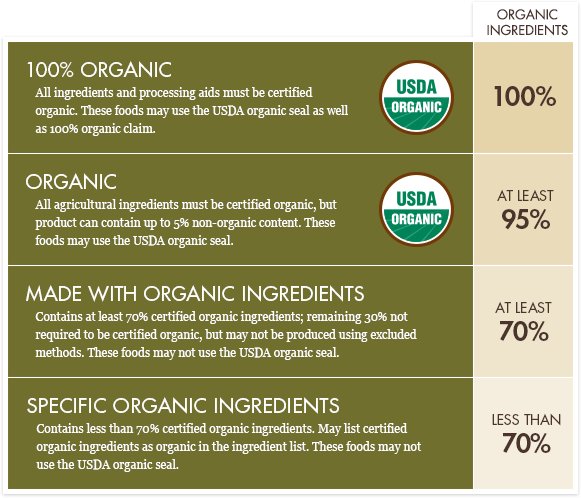
Organically farmed products have long been hailed as the healthier and more sustainable option to their conventionally grown counterparts. From the miraculous expansion of Wholefoods to the countless organic food co-ops to farm-to-table restaurants, organic products are the mainstay of many people’s daily lives. However, organic tea is actually a worse choice in many cases.
Many people believe that just because something is labeled or marketed as “organic”, it is better. In fact, the term “organic” is now synonymous with health, good living, “green-ness”, or other positive words with rather vague meanings. But what does organic even mean?
Since Luv Tea is founded by tea farmers, it makes sense to talk about the word “organic” from a farmer’s perspective first.
Farming is usually divided into conventional farming, and organic farming.
Conventional farming is the type of farming that humans have been doing for thousands of years. The USDA defines conventional farming as:
“[…] the use of seeds that have been genetically altered using a variety of traditional breeding methods, excluding biotechnology, and are not certified as organic. Some conventional breeding methods have been used for thousands of years, often times to develop plants with faster growth, higher yields, pest and disease resistance, larger seeds or sweeter fruit. Conventional crops may be grown simply as commodities and enter the commodity stream where they are mixed with other crops, including GE, or they may be grown to meet a requirement set forth by an end market, such as a specific chemical or nutritional requirement. When conventional crops are targeted for a unique end market, farmers often receive premium prices.”
https://www.usda.gov/sites/default/files/documents/coexistence-conventional-farming-factsheet.pdf
Since humans planted the first seed with the particular intent of having it yield crops, to learning how to produce more crops than just letting nature run wild, to slash and burn farming, to crop rotation, and so on. These are the methods of our ancestors that evolved into what farmers do today.
Farmers grow crops on a limited piece of land. In order to feed a specific population, the crop yield needs to be as high as possible. Higher crop yields also mean that there is more profit to be made for the farmers and they can then invest in more land and grow more crops. The goal of farmers in conventional farming is to grow as much crops as possible. Crops in turn feeds the human population and also support the livelihoods of the farmers.
In order to maximize the crop yield, many companies have developed synthetic chemicals either as pesticides or as fertilizers. The use of these pesticides allow a higher crop yield by efficiently killing off pests, while fertilizers contains higher nutrition for crops in a rather consistent basis.
Synthetic pesticides and fertilizers has disadvantages. In terms of pesticides (such as roundup, carbyl, fipronil), it can lead to contamination of the soil and possibly leftover pesticide residues. But this does not mean that conventionally grown crops are toxic, as it takes hundred of chemicals to grow crops, by the time these crops reach the consumer, the amount of pesticides should be negligible. Synthetic fertilizers lack micro-organisms, which will require the farmer to apply , the lack of micro-organisms will result in lower quality soil.
So why do farmers use synthetic agri-chemicals in their operations? One of the easiest answer is higher crop yield. Please keep this point in mind as we move on to organic farming.
Organic farming, as defined by the Canadian Ministry of Agriculture, is “[…] a holistic system designed to optimize the productivity and fitness of diverse communities within the agro-ecosystem, including soil organisms, plants, livestock and people. The principal goal of organic production is to develop enterprises that are sustainable and harmonious with the environment.”
It is important to note that organic products are not pesticide-free, chemical-free, or more sustainable. It is another method of farming.
Just like conventional farmers, organic farmer also try to grow as much crops as possible within a limited space. However, unlike conventional farmers, they must achieve this goal using organic means.
The USDA has very specific guidelines on the methods used in organic farming. Some of these include buffer zones from conventional farms, using approved materials for greenhouses, special treatment of lumber, crop nutrients requirements, must source specific seeds, using certain organic fertilizers and pesticides, etc.
Organic pesticides are pesticides that are derived from the remains or byproducts of a living or once-living organism, as opposed to some conventional pesticides that are synthetic. The USDA has a list of all the approved and non-approved chemicals to be used in organic farming, which can be found here. It is important to understand that some organic pesticides are also lethal to humans beings, just like conventional pesticides. The rate of using these organic pesticides are also usually higher as they are not as effective as conventional pesticides.
Organic fertilizers are more diluted than their synthetic counterparts, requires more knowledge to use, and can be more costly for farmers.
There are also a lot of benefits to organic farming. It can reduce human’s exposure to toxic materials and heavy metals. In some cases it could also lower the dependence on fossil fuels. Other studies have found that apples that were raised in organic farming methods contain higher anti-oxidants. But while organic produce may be better in terms of nutritional benefits, it does not mean that conventional produce are harmful, as most studies conclude that conventionally grown crops are just as healthy and safe as their organic counterparts, as all food must meet the same food safety standards.
So is organic farming better?
It is important to note that farmers grow their crops to feed a specific population. The human population increased slowly and maintained a stable one billion people globally up until the 1800s. Since then, we have grown exponentially to around eight billion people today. So the conventional farming methods had to evolve. Landmass suitable for farming is constantly decreasing at the alarming rate of 100,000 km² (38,610 square miles) per year. Without serious advances in agriculture, the entire world would starve.
Organic farming is one of these advances, but without the ability to match the crop yield of conventional farming, it cannot be used as a substitute for large-scale conventional farming in its current stage. In fact, it would be an unprecedented disaster if the entire world switched from conventional farming to organic farming, as more land will be taken for agriculture, destroying wildlife habitats, while creating more starvation due to lower crop yields.
No matter how a produce is farmed, the tests for whether it is acceptable for consumption is the same. Both organic and conventional farms have the same guidelines in producing a quality crop.
There are also two main problems with organic products: the consumer’s lack of knowledge about organic products and the economic burdens placed on farmers.
The average consumer believes that organic equals a better product. Just because something is labeled as “organic”, it does not mean that it is immediately safer for consumption or better for the environment. In addition, the average consumer is unfamiliar about the four levels of legally calling something as “organic”.

As the picture above illustrated, any product can be marketed as “organic” even if the percentage of organic ingredients are extremely low. In fact, it is possible for us to create an “organic black tea blend” by using conventionally grown tea and ingredients, but adding in one or two organic ingredients, and the consumer would be none the wiser.
The burden falls on the consumer to understand what “organic” means and if the percentage of conventionally grown ingredients that make up a product is acceptable. One article criticizing Whole Foods makes the point that sometimes the products only seem better because of branding:
“Whole Foods features products that are ‘natural’, meaning ‘free of artificial colors, flavors, sweeteners, and hydrogenated oils’. It does not claim that all their products are free of such ingredients, just the featured products. They claim commitment to foods that are fresh, wholesome and safe to eat. This is the extent of the quality pledge the store makes to its customers. It does not claim that all the foods it sells are organic or free of everything troublesome.”
https://www.organicconsumers.org/news/whole-story-about-whole-foods-market
When choosing organic products, it is important to look for the “USDA Organic” label than just having something be marketed as “organic” by the seller. Just like how ceremonial grade matcha is mostly a marketing term used to sell a product for a higher cost, the term “organic” is also sometimes used to simply drive up the cost of the product and is not truly “organic” or good for you.
What are the economic burdens placed upon farmers for organic farming?
Now it is time to talk about how organic farming affects farmers. You may remember the guidelines for what qualifies as a organic farm by the USDA from previous paragraphs. What these guideline means is that if you currently operated a conventional farm, you must invest a large sum of money in order to have an USDA certified organic farm.
A typical farmer would have to borrow the money to:
- Create a buffer zone from other farms to prevent unintended cross-contamination of prohibited substances (such as another farmer spraying conventional pesticide on his own crops).
- Change their entire soil mix to mixes that use only approved materials.
- Implement approved methods for farming (such as crop rotation) to make sure that the soil and land meet specific requirements in crop nutrients. Conventional farmers can just spray fertilizers.
- Give up their saved seeds and switch to certified organic seeds. This disqualifies wild seeds and heirloom seeds.
- Introduce different methods for pest control, some of which requires hiring more workers or introducing natural predators and parasites.
- Changing the irrigation and water used for rinsing.
- Let a third-party to do inspections to maintain the organic certification.
These are just some steps needed to qualify for organic certification. Of course, the transition from conventional to organic is around three years before the farm can be organically certified.
A consensus among farmers that we interviewed said that they would have to change all the machinery that they currently use, deal with lower crop yields, and the whole process of changing from conventional to organic farming would take around three to five years. Of course, after the certification, the cost of the crops would increase to offset the investment and lower crop yield, but these are projections and few would risk their entire livelihood to go down the certified organic route.
For those farmers who do choose to grow organically, they are able to access organic markets where their crops can be sold for higher. Their farms will also be able to build up a reputation and consistently producing a high-quality organic product will allow them to be more successful over time. But this would be a choice that each farm makes, as there are advantages and disadvantages to both methods.
For a person’s home garden or any non-industrial-scale operation, organic farming can be a better choice. But for these farmers, it may not make sense to go through the organic certification program due to the financial burdens. This means that while some farmers do everything they can to make a crop as nutritionally dense as possible, they might not be able to afford the certified organic label.
So what does this all mean in the end? We here at Luv Tea believe that getting to know the farmers is the most important thing in determining the quality of the crop.
For example, many customers ask for organic milk for their milk teas in the store. Based on our own research and testing, we found that Hudson Valley Fresh Whole Milk, even without any organic certification, is much better than any organic milk currently on the market. We also use their whole milk because they are more beneficial to the human body.
Other products such as goji berries and rose petals, we source from certified and non-certified organic suppliers because their end product is better for us, and in most cases pesticide-free, even if the taste may be slightly weaker. This is a conscious choice that we made as a team after sampling products from various suppliers and farmers.
Buying locally is also more important than buying organic products. Many large supermarkets can afford to ship organic produce via airplanes during off-season. However that generates more pollution and does more harm that buying a local seasonal produce. There are a lot of benefits in buying from local farmers. Getting to know where your produce comes from may be a bit of work in the beginning, but ultimately it is very rewarding.
After all that, we finally come to the point of the article, and why you should not drink organic teas.
The first thing to understand about the tea industry is that the cost of a good tea increases exponentially as it gets better and better. Tea farmers in Taiwan and mainland China enter competitions against each other to find out whose tea is better.
In Taiwan, to qualify as a judge in these competitions, the farmer must first win a number of awards. This means that by the time a farmer becomes a judge, he would have master the art of planting, harvesting, treating, and roasting a specific type of tea and has the credentials to prove it.
Teas that come from famous farms (such as ours) and roasted by famous farmers are usually sold out a year before the crop is even harvested. The prices of these teas are extremely high, and when someone purchases this tea, it is sold as all or nothing. Which means that a purchaser cannot just buy one pound of tea, they have to buy the entire production. This makes things easier for the tea farmer, as he has a guaranteed income for his products a year in advance. Needless to say, people fight tooth and nail for the opportunity to bid on these teas.
The methods used for growing these teas are passed down from generations. High elevation oolong are watered with mountain glacier waters, the lack of insects and heavy fogs mean that there are no need for pesticides, and the picking process and timing have been mastered over time. However, none of these are certified organic.
No famous tea farm need to go through the certified organic process, as their crops are in such demand, that having the organic certification makes zero sense, even if all the methods of production are as clean as possible. The Taiwanese local government also has checks and balances for each tea, ever since the Qing dynasty, which makes sure that their teas’ quality are as high as possible.
So why are there organic teas in the market?
If we look past the high-end teas and come to mass-scale tea production, we then see a need for organic certification. If a large tea producer can get the certified organic label on their products, then the cost of each sale of tea will increase, allowing them to cover the cost of lower yields and may even make a nice profit. This is a good thing for the farm.
As the competition for mass-produced teas is extremely intense, many have tried to stand out using certain forms of production such as small-batch, certified organic, gluten-free, etc. This competition between tea brands and retail shelf space is a big driver in the need for organic certification.
Other than the need to stand out, in our opinion, organic teas tastes weaker. Of the hundreds upon hundreds of organic teas that we tasted here, not once did we find that an organic tea of one brand tastes as strong or as flavorful as a similar tea from the same brand.
We invite you to do the same experiment at home, when you buy both organic and conventional grown teas of the same type (green, black, unflavored, etc.) from the same brand. Please let us know your results via instagram.
While there are many different advantages and disadvantages in both organic and conventional farming methods, it is impossible to make a blanket statement for certain which type of product a consumer should choose or which is better or worse for people or the planet. Consumer knowledge is the key in making informed decisions about said products, and information is always available from vendors.
Originally published on January 25th, 2020.
